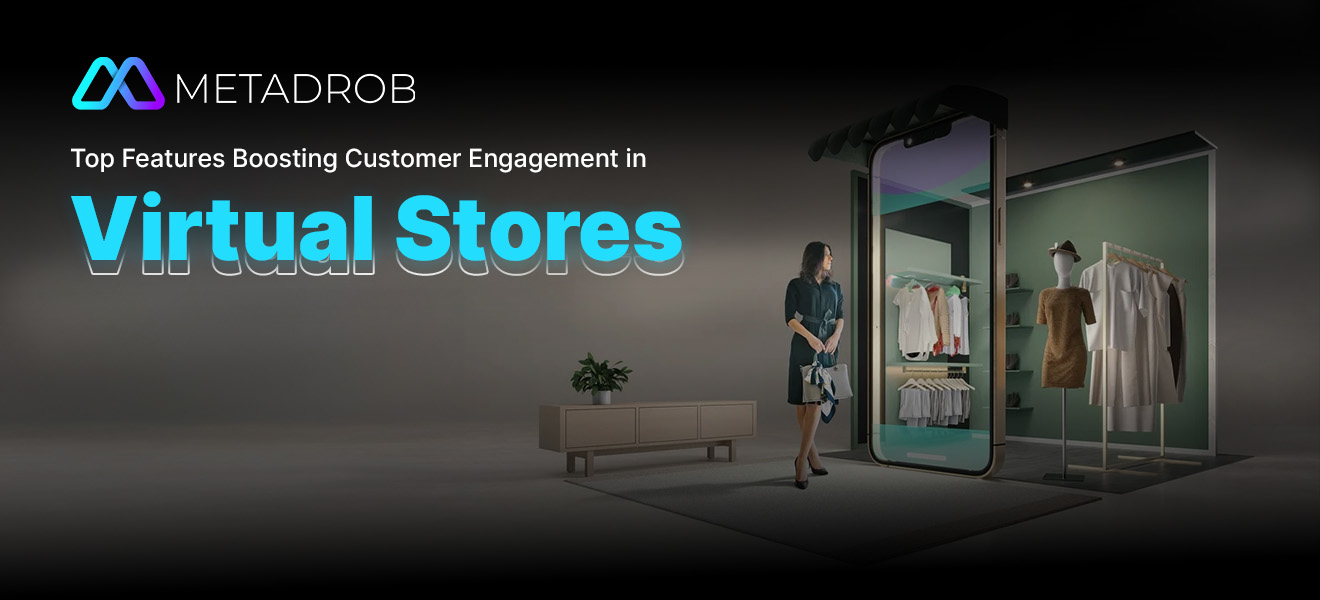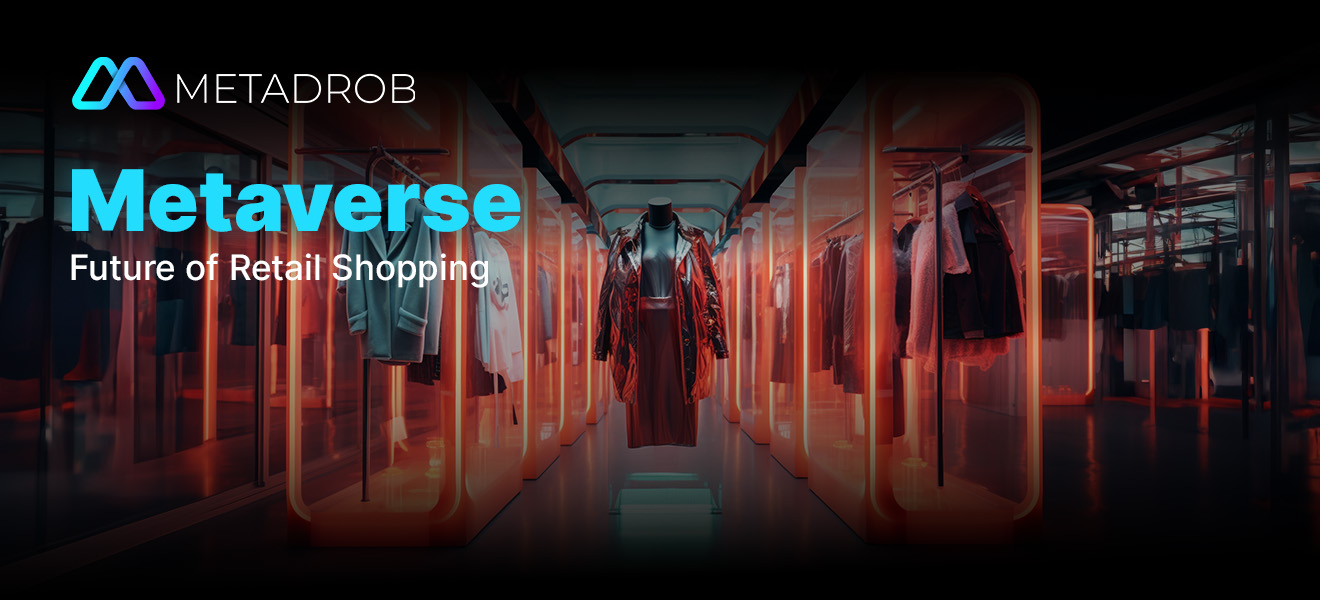How Virtual Shopping is Shaping the Future of E-commerce?

Introduction
According to ScienceDirect, digital transformation has a huge impact on the retailing value chain, and virtual stores are no exception. Virtual stores are becoming a crucial component of the retail environment in the current digital era. Businesses need to put customer involvement first if they want to succeed in this cutthroat market.
However, establishing a really engaging online buying experience calls for a calculated strategy. This blog explores the essential elements that boost consumer interaction in online retailers. Retailers may improve customer satisfaction, boost conversions, and create enduring partnerships by comprehending these components.
Immersive Shopping Experiences
3D Product Visualizers:
3D product visualizers are a useful technique to close the tactile experience gap in virtual retailers, where it is frequently restricted to digital screens. These visualizers give clients access to interactive 3D models of products, which provide a much higher level of engagement than standard product photos.
Imagine having complete control over how you can rotate, zoom in, and out of a product, as well as examine minute details that would be hard to see in a 2D image. This kind of immersive experience builds trust and improves client understanding. Customers are more likely to feel secure in their choice to buy when they are able to view a product in greater detail and envision it in their environment.
Additionally, things like jewelry, furniture, or intricate electronic gadgets that are challenging to describe or visualize in two dimensions might benefit greatly from the use of 3D product visualizers. Virtual stores can offer a more educational and fulfilling purchasing experience by letting shoppers examine these things in a 3D setting.
Augmented Reality (AR) Try-Ons:
Try-ons for augmented reality (AR) have completely changed the way people purchase online. Through the process of superimposing digital product images onto an actual setting, consumers are able to virtually try on clothing or cosmetics.
Customers can see how a product appears on them in real-time, from different perspectives, and in varying lighting conditions via AR try-ons. This removes the uncertainty and risk that come with making purchases online because consumers are better able to decide whether an item fits their preferences and style.
Virtual Tours:
The metaverse is transforming the eCommerce industry rapidly. Virtual tours are one example of how they give a level of immersion that traditional e-commerce cannot match by giving customers a digital tour of a physical store or product collection. With the use of this technology, customers may examine items from several perspectives, find hidden treasures, and learn more about the design and ambiance of the business.
3D modeling tools and high-quality photography can be used to create immersive virtual tours. Retailers may create a genuinely interesting and educational buying experience by integrating these components with interactive features like clickable hotspots and product information. Higher customer happiness, lower cart abandonment rates, and eventually higher sales can result from this.
Personalized Shopping Experiences
AI-Powered Recommendations:
Personalization is essential in the world of virtual stores to increase consumer involvement. AI-powered recommendations are one effective way to achieve this.
Artificial intelligence (AI) algorithms are able to make precise recommendations for products that are likely to catch customers’ attention by examining their browsing history, preferences, and purchasing behavior. This tailored strategy raises the possibility of conversions while also improving the shopping experience.
For example, an AI-powered recommendation system may recommend new products like workout accessories or new arrivals in the sports apparel category to a consumer who often examines those items. This customized strategy encourages consumer loyalty and happiness by introducing them to things they might not have otherwise thought about.
Personalized Product Descriptions:
Customizing product descriptions to each client’s interests and demands is another effective way to increase consumer engagement. Businesses can increase the possibility of purchase by creating descriptions that truly resonate with customers based on their understanding of their individual preferences. Customized product descriptions can be made using a variety of methods, like employing algorithms driven by artificial intelligence to evaluate consumer data and make product recommendations.
Furthermore, adjusting product descriptions to correspond with particular tastes can be facilitated by integrating client demographics, browsing history, and previous purchases. This customized approach builds loyalty and trust by improving the purchasing experience and exhibiting a sincere grasp of the demands of the customer.
Saved Shopping Lists:
It’s simple to become overwhelmed in the busy world of internet shopping, where there are endless things available with just a click. The saved shopping list feature is useful in this situation. Virtual stores give customers a simple and customized shopping experience by letting them save things for later purchase or reference.
With the help of this function, clients may create personalized collections, be it a wish list of ideal products or a selection tailored to a particular event. Whether consumers are entertaining, remodeling, or just indulging in a little retail therapy, saved shopping lists keep them focused and organized.
Seamless User Experience
Intuitive Navigation:
You can readily guide customers around your virtual store and make sure they find what they’re looking for quickly and easily by designing an interface that is easy to use and has obvious navigation paths. Throughout the whole purchasing process, a user-friendly navigation structure should be consistent and easy to understand.
Customers may easily track their journey and go back to earlier pages with the help of well-organized categories, search bars, and footprints. Additionally, users can comprehend the purpose of each piece and make informed judgments if menus, buttons, and links have clear and concise labeling.
Fast Load Times:
In today’s fast-paced digital world, every second matters. Website load speed is one of the most important variables affecting consumer engagement in online commerce. Customers may become irate at slow-loading pages, which may increase the bounce rate and decrease revenue.
It’s critical to optimize website speed for rapid load times. This entails employing a dependable content delivery network (CDN), reducing file sizes, optimizing pictures for compression, and utilizing browser caching. Virtual retailers can offer a smooth and delightful purchasing experience that attracts customers by emphasizing speed.
Mobile Optimization:
Mobile devices have become an essential component of our everyday life in the digital age. This implies that companies need to make sure their internet presence is mobile-friendly. This is particularly true for online retailers since a large percentage of their clientele will be using smartphones and tablets to visit their websites.
Having a virtual store that works flawlessly on mobile devices is not merely a desirable feature—it’s a must. Websites that are optimized for mobile devices load more quickly, are simpler to use, and offer a better overall user experience. This results in higher conversion rates, better consumer engagement, and enhanced brand reputation.
Other Features To Consider
Social Proof and Trust
Putting real customer reviews and ratings up and center is one of the best methods to take advantage of social proof. Positive reviews from actual customers might greatly influence decisions made by prospective customers.
Integrating social media is another way to increase trust. You may foster a feeling of community and promote word-of-mouth advertising by enabling customers to discuss their purchases and experiences on social media channels.
Furthermore, providing safe payment methods is crucial to gaining clients’ trust. A range of reliable payment choices, including digital wallets, credit cards, and buy now, pay later plans, can ease worries about fraud and data protection.
Engaging Content and Community
Customer engagement with virtual stores can be greatly increased by providing compelling content and fostering a community. Product storytelling is one effective tactic to accomplish this.
You may instill feelings and establish a closer bond with clients by crafting gripping stories around your items. This is more than just a simple description of an item; it turns each one into a narrative that speaks to their goals and objectives.
Building a community inside your online store is another smart strategy. You may foster a strong feeling of community by setting up discussion boards where clients can communicate, exchange stories, and offer input. In addition to promoting repeat business, this produces insightful data that may be used to enhance your offerings.
Exceptional Customer Service
Easy returns and exchanges, live chat assistance, and round-the-clock customer service are just a few of the many elements that go into creating a great customer experience. Customers may easily get real-time help using live chat support, which allows them to quickly address difficulties or receive answers to concerns.
Businesses show their dedication to satisfying consumer demands at all times by offering 24/7 customer service, which builds loyalty and trust. Simplifying the return and exchange procedure also guarantees that consumers are secure in their purchases and are inclined to make more purchases in the future.
Elevate Your Virtual Store Experience With Metadrob
In order to improve your virtual store experience even further, think about partnering with a feature-rich platform like Metadrob. You can build a virtual store that draws in customers and keeps them coming back by adding features like social proof, personalized recommendations, flawless user interfaces, immersive shopping experiences, and top-notch customer service. Metadrob provides a vast array of tools and solutions to help you achieve these objectives.
So, do not delay any further. In a matter of days, witness a dramatic increase in your store’s customer engagement by integrating these features with Metadrob.
BOOK FREE DEMO with us. Create your virtual store today.
Connect with Metadrob
Ready to take the first step towards unlocking opportunities, realizing goals, and embracing innovation? We're here and eager to connect.

+91 966-004-4020







01 Comment
Does Virtual Store Really Improve Customer Retention?,
09 September, 2024[…] opportunity for increased revenue is one of the main upsides of driving customer engagement in virtual stores. Because they are familiar with the merchandise and services, traditional customers usually invest […]
Comments are closed.